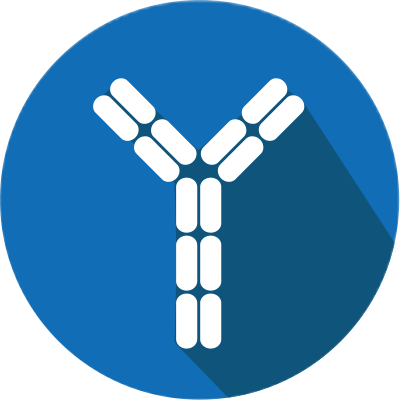
Cambridge Healthtech Institute’s Inaugural
Lead and Candidate Selection for Therapeutic Proteins
Strategies and Best Practices for Key Early Decision Gates
January 21-22, 2020
Part of the Protein Engineering & Development pipeline
The screenings and studies that comprise a company's lead and candidate selection funnel are an essential stage of biopharmaceutical R&D. Good selections not only ensure that the best quality molecules are chosen for advancement, but that these match
target profile for efficacy, safety, and pharmacology. PepTalk's new Lead and Candidate Selection for Therapeutic Proteins meeting presents a wide range of strategies, models and technologies used for these evaluations, and considers the best practices
in this field. Case studies from both large and small organizations will showcase the innovative ways organizations have employed these tools to help ensure rapid progression through subsequent development steps and the prospects for success in the
clinic.
Final Agenda
Day 1 | Day 2 | Download Brochure
TUESDAY, JANUARY 21
1:00 pm Registration (Sapphire West Foyer)
1:30 Refreshment Break in the Exhibit Hall with Poster Viewing (Sapphire Ballroom)
2:00 Chairperson’s Opening Remarks
Max Vásquez, PhD, Head, Computational Biology, Adimab LLC
KEYNOTE PRESENTATION
2:05 Chemical and Physical Properties of Drug-Like Antibodies
 Peter M. Tessier, PhD, Professor, Pharmaceutical Sciences, Chemical Engineering and Biomedical Engineering, University of Michigan
Peter M. Tessier, PhD, Professor, Pharmaceutical Sciences, Chemical Engineering and Biomedical Engineering, University of Michigan
Monoclonal antibodies display variable and difficult-to-predict levels of non-specific (heterotypic) and self (homotypic) interactions that lead to various drug development challenges, including antibody aggregation, abnormally high viscosity and fast
antibody clearance. In this presentation, we will report novel experimental and bioinformatics methods for identifying, engineering and predicting antibody variants with drug-like specificity for diverse panels of preclinical and clinical antibodies.
2:45 Designing Better Therapeutics by Understanding the Complexity of the Target Ortholog in Nonhuman Primates
 Ramkrishna (Ramu) Sadhukhan, PhD, Principal Research Scientist, Global Protein Sciences, AbbVie Bioresearch Center
Ramkrishna (Ramu) Sadhukhan, PhD, Principal Research Scientist, Global Protein Sciences, AbbVie Bioresearch Center
Nonhuman primates (NHP) exhibit genetic variation due to allelic drift resulting from geographic separation and environment, including diet and microbiome. These genetic differences may affect drug targets and thereby impact the outcome of the studies.
In my presentation, I will describe a comprehensive approach that we have adopted at AbbVie to interrogate polymorphisms of our target molecules in NHP. Case studies will be used to illustrate the impact of such investigations.
3:15 Antibody Protein Sequencing with Mass Spectrometry
 Anthony Stajduhar, Business Development Manager, Rapid Novor, Inc.
Anthony Stajduhar, Business Development Manager, Rapid Novor, Inc.
Many applications in antibody engineering require the direct sequence of antibody proteins. At Rapid Novor (www.rapidnovor.com) we have developed a robust workflow and routinely sequence antibody proteins. Here we share our success stories, examine
common mistakes novices make and present our practices to ensure the correctness of every amino acid.
3:30 Sponsored Presentation (Opportunity Available)
3:45 Refreshment Break in the Exhibit Hall with Poster Viewing (Sapphire Ballroom)
4:30 Exploiting an Achilles Heel on Lassa Virus Glycoprotein to Improve Antibody Therapeutics and Vaccine Design
 Kate Hastie, PhD, Instructor, La Jolla Institute for Immunology
Kate Hastie, PhD, Instructor, La Jolla Institute for Immunology
Lassa virus causes ~5000 deaths from viral hemorrhagic fever every year in West Africa. The trimeric surface glycoprotein, termed GPC, is critical for infection, is the target for neutralizing antibodies, and is a major component of vaccines. Structural
analysis of Lassa GPC bound to antibodies from human survivors reveals a major Achilles heel for the virus and provides the needed template for development of immunotherapeutics and improved vaccines.
5:00 Chemical Liability Analysis of the Therapeutic Antibody Sequence Landscape
 Max Vásquez, PhD, Head, Computational Biology, Adimab LLC
Max Vásquez, PhD, Head, Computational Biology, Adimab LLC
Asparagine deamidation and aspartate isomerization are among the most common modes of degradation observed in therapeutic antibodies. Here, we produced 131 mAb samples with sequences from clinical-stage mAbs, subjected these to low and high pH stresses,
and identified the resulting modifications at amino acid-level resolution via tryptic peptide mapping. Amassing data across this diverse antibody set enabled us to identify regions and sequence features prone or resistant to chemical modification.
5:30 Close of Day
5:30 - 5:45 Short Course Registration
5:45 - 8:45 Recommended Dinner Short Courses*
SC1: Best Practices for Biotherapeutic Discovery and Development - Detailed Agenda
Instructor: Wasfi AlAzzam, PhD, CSO, TechnoPharmaSphere (TPS)
SC3: Structure-Based Optimization of Antibodies - Detailed Agenda
Instructor: Traian Sulea, PhD, Senior Research Officer, Human Health Therapeutics, Biotechnology Research Institute, National Research Council Canada
*Separate registration required
Day 1 | Day 2 | Download Brochure
WEDNESDAY, JANUARY 22
7:45 am Registration (Sapphire West Foyer) and Morning Coffee (Sapphire West & Aqua West Foyer)
8:15 Chairperson’s Remarks
Karl Griswold, PhD, Associate Professor, Engineering, Dartmouth
8:20 Engineering Molecules with Complex Modes of Action by Improved Understanding of Drug Biology
 Hubert Kettenberger, PhD, Senior Principal Scientist, Protein Engineering, Roche, Germany
Hubert Kettenberger, PhD, Senior Principal Scientist, Protein Engineering, Roche, Germany
Next-generation therapeutics often require proteins which can do more than just bind a target, e.g., in situ activation, pH-dependent binding, penetration through barriers, etc. This increased complexity makes it difficult
to find molecules with exactly the right properties (e.g., activation kinetics) to be fit for purpose. We will present a DOE-type simulation of the envisaged mode of action in order to guide protein engineering towards optimal drug properties.
8:50 Preclinical Risk Assessment Tools to Support Probability of Immunogenicity Risk in the Clinic
 Vibha Jawa, PhD, Director, Risk Assessment and Clinical Immunogenicity, Merck
Vibha Jawa, PhD, Director, Risk Assessment and Clinical Immunogenicity, Merck
The risk assessment approaches have evolved over the past decade with multiple approaches that rely on both algorithms and cell-based assays. This talk will provide recent advances in several cell-based assay formats to address specific questions
around immune modulation, next-generation biologics and gene therapy/cell-based and nucleic acid-based therapies. The questions around antigen processing and the T cell repertoires to react with the biologics will be presented.
 9:20 ADCascade: A New Clinically Based Approach for Target Validation, Lead Design and Selection
9:20 ADCascade: A New Clinically Based Approach for Target Validation, Lead Design and Selection
 Mark Frigerio, PhD, VP Design and Development, Abzena
Mark Frigerio, PhD, VP Design and Development, Abzena
Current focus of ADC development is complex conjugation chemistry. Some ADC are approved and marketed but clinical efficacy and safety concerns continue. A new approach, ADCascade is needed for target validation, lead selection and conjugation
chemistry. Augment target validation with clinically characterized tissues to identify patient subgroup of interest. Rational design with augmented with binding studies to clinically characterized off-target.
9:50 Coffee Break in the Exhibit Hall with Poster Viewing (Sapphire Ballroom)
10:35 Robust Computational Algorithms for de novo Design of Functional Proteins
 Daniel-Adriano Silva, PhD, Vice President, Head of Research, Neoleukin Therapeutics, Inc.
Daniel-Adriano Silva, PhD, Vice President, Head of Research, Neoleukin Therapeutics, Inc.
Neoleukin-2/15 is the first entirely de novo protein with biological activity, and it combines the signaling properties of IL-2 and IL-15. Neoleukin 2-15 has been computationally engineered to have optimized therapeutic
properties, is thermally hyper-stable, and has higher potency and reduced side effects compared to natural IL-2 or IL-15. We foresee that the technology behind the creation of Neoleukin-2/15 will enable the development of a next generation
of protein-based therapeutics optimally engineered to treat disease.
11:05 Quest for Quality Drug: The Application of Early Screening Biophysical Assays to Select Manufacturable Molecules
 Sathya Venkataramani, PhD, Associate Director, Biophysics, Janssen Biotherapeutics
Sathya Venkataramani, PhD, Associate Director, Biophysics, Janssen Biotherapeutics
One of the major factors that has commonly impacted the success rate of Phase I drugs to progress for FDA approval is poorly behaved molecules. To save cost and to expedite development that will enable a higher success rate, it is undoubtedly
critical to characterize the intrinsic properties of molecules early on. This talk is designed to highlight few high-throughput assays and first principle-based biophysical tools to select molecules that are risk-free from manufacturing
challenges.
11:35 Preemptive Mitigation of Biotherapeutic Immunogenicity via Optimized Library Design
 Karl Griswold, PhD, Associate Professor, Engineering, Dartmouth
Karl Griswold, PhD, Associate Professor, Engineering, Dartmouth
Protein therapeutics can elicit detrimental antidrug antibody responses (ADA) in patients, and the safety and financial ramifications of clinical ADA have begun to prompt earlier consideration of immunogenicity risk during drug development.
Here, we describe the use of advanced protein design technologies that enable ensemble “deimmunization” of entire recombinant protein libraries. Our strategy is to mitigate immunogenicity risk during the earliest phase of drug
discovery, thereby producing preemptively deimmunized candidates for lead selection.
12:05 pm Session Break
 12:15 LUNCHEON PRESENTATION: RenMabTM Mouse and In Vivo Efficacy-based Solution for Fully Human Antibody Drug Discovery
12:15 LUNCHEON PRESENTATION: RenMabTM Mouse and In Vivo Efficacy-based Solution for Fully Human Antibody Drug Discovery
Benny Yang, CSO, Director of Antibody Discovery, Biocytogen
Transgenic animals have been widely deployed to generate fully human antibody therapeutics. However, most existing models have limited human V genes in the antibody gene loci and demonstrate suboptimal B cell responses. Herein, we present the latest validation data for RenMab Mouse, the first transgenic mouse with the entire variable region replaced by the human counterparts.
12:45 Luncheon Presentation II (Opportunity Available)
1:15 Session Break
Aqua Salon
1:45 PLENARY KEYNOTE PANEL
The PepTalk Plenary Keynote Panel convenes a group of leading scientists working across novel therapeutic modalities and R&D technologies to explore the many challenges associated with discovering, developing, and advancing today’s
novel biotherapeutics. The Panel, via a highly interactive format, encourages discussion among both the panelists and the audience members. Please come prepared with your questions and ideas for this spirited discussion.
- Advances and challenges in expression and production for novel modalities
- Implementing next-generation informatics: data collection, standardization, analysis, ML/AI, and considerations for IP landscape and protection
- Implementing R&D and production capacity for gene and cell therapies – where are we heading?
- Modality-specific challenges: multi-specifics for cancer, improving the ADC therapeutic window, improved safety and pharmacology, novel delivery/targeting
- Preclinical and clinical development of drug combinations with focus in IO: How do we select the right combination dose so we can accelerate clinical development?
Moderator:
 Mohammad Tabrizi, PhD, Senior Director, Pharmacology, Ascendis Pharma A/S
Mohammad Tabrizi, PhD, Senior Director, Pharmacology, Ascendis Pharma A/S
PANELISTS
 Edward Kraft, PhD, Senior Scientific Manager, Biomolecular Resources, Genentech
Edward Kraft, PhD, Senior Scientific Manager, Biomolecular Resources, Genentech
 Ilya Shestopalov, PhD, Associate Director, Cell Analytics, bluebird bio
Ilya Shestopalov, PhD, Associate Director, Cell Analytics, bluebird bio
 David E. Szymkowski, PhD, Vice President, Cell Biology, Xencor, Inc.
David E. Szymkowski, PhD, Vice President, Cell Biology, Xencor, Inc.
 Alayna George Thompson, PhD, Senior Scientist I, Drug Discovery Science & Technology, AbbVie
Alayna George Thompson, PhD, Senior Scientist I, Drug Discovery Science & Technology, AbbVie
3:05 Refreshment Break in the Exhibit Hall with Poster Viewing (Sapphire Ballroom)
4:00 Chairperson’s Remarks
Rajiv Panwar, PhD, Principal Scientist, Magenta Therapeutics
4:05 An in vitro Transcytosis Assay for Predicting in vivo Clearance of Therapeutic Antibodies
in Humans
 Chang Liu, PhD, Associate Scientist, BioAnalytical Sciences, Genentech
Chang Liu, PhD, Associate Scientist, BioAnalytical Sciences, Genentech
Proper evaluation of candidate drugs for desirable pharmacokinetic (PK) properties is imperative to successful biotherapeutic development. We have developed an in vitro cell-based assay to measure transcytosis of
monoclonal antibodies (mAbs), which showed a notable correlation between the transcytosis readouts of more than 50 mAbs and their clearance in humans. This assay may serve as a screening tool for predictive assessment of non-specific clearance
of antibody-based drug candidates in humans.
4:35 Selection and Characterization of a Lead Antibody for an Antibody-Drug Conjugate to Achieve Non-Genotoxic Conditioning for Bone Marrow Transplant
 Rajiv Panwar, PhD, Principal Scientist and Head, Analytical and Formulation Development, Magenta Therapeutics
Rajiv Panwar, PhD, Principal Scientist and Head, Analytical and Formulation Development, Magenta Therapeutics
Antibody-Drug Conjugates (ADCs) are an emerging class of biotherapeutics that are starting to find applications in areas other than oncology. This talk will focus on selection, characterization and developability analysis of a lead antibody
from a panel of molecules obtained from discovery and affinity maturation campaigns. The lead antibody was further engineered and optimized to enable site-specific conjugation of the linker-payload and tuning of Fc-receptor interactions.
5:05 Benchmarking to Validate Developability Risk Assessment
 Jonathan Kingsbury, PhD, Senior Director, Developability & Preformulation Science, Sanofi
Jonathan Kingsbury, PhD, Senior Director, Developability & Preformulation Science, Sanofi
Successful screening of pre-candidate molecules requires reliable, well-characterized developability tests and accurate projection of development risk from the results. Benchmarking against process experience, proof-of-concept datasets,
and precedent data provides the context needed to enable valid risk assessments. An overview of the strategy for benchmarking a developability workflow will be described and illustrated with several examples.
5:35 Improved AC-SINS Assay to Remove the Hurdles of Salt Dependency in Formulation Screening
 Samantha Phan, Consultant Biologist, Protein BioSciences, Eli Lilly and Company
Samantha Phan, Consultant Biologist, Protein BioSciences, Eli Lilly and Company
Affinity-capture self-interaction nanoparticle spectroscopy (AC-SINS) is a high-throughput screening assay to evaluate antibody self-interaction propensity. One challenge has been instability of gold nanoparticles under low salt and incompatibility
with histidine-based buffers. We have improved the assay to perform robustly in multiple formulation conditions, including histidine buffer in low salt environment. The optimized assay format further enables the screening of molecules
under relevant formulation conditions critical for downstream development.
6:05 - 7:00 Networking Reception in the Exhibit Hall
with Poster Viewing (Sapphire Ballroom)
7:00 Close of Lead and Candidate Selection for Therapeutic Proteins Conference
Day 1 | Day 2 | Download Brochure